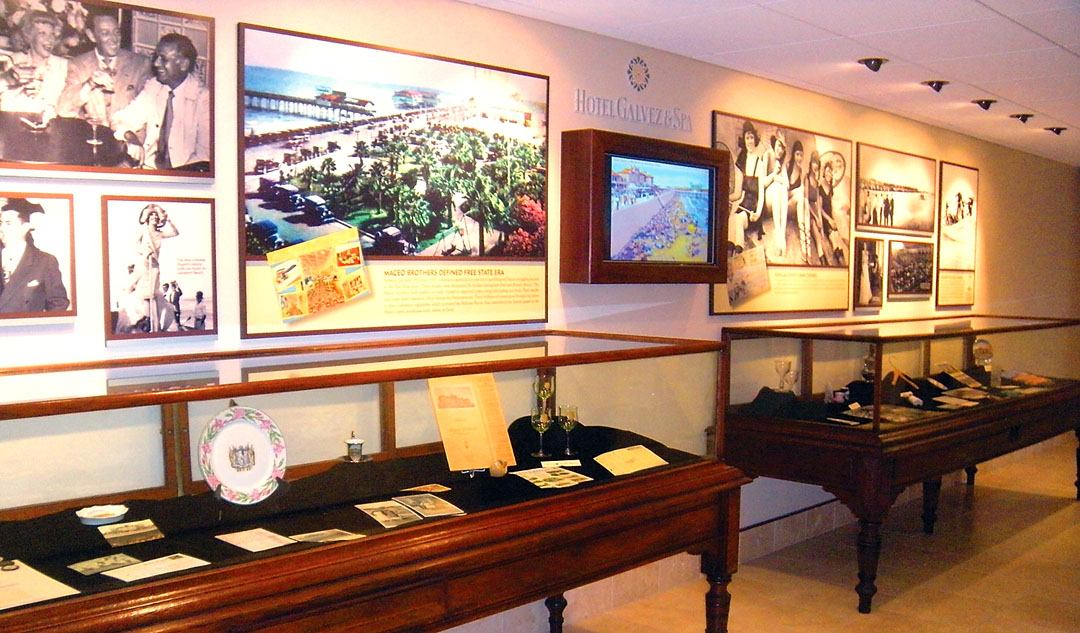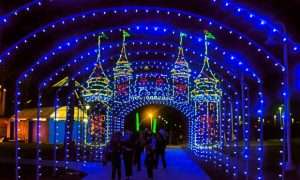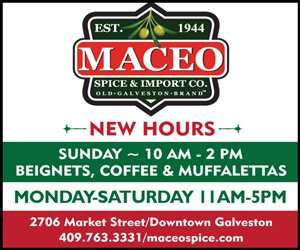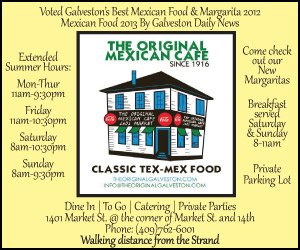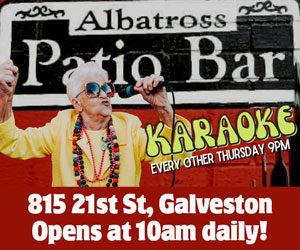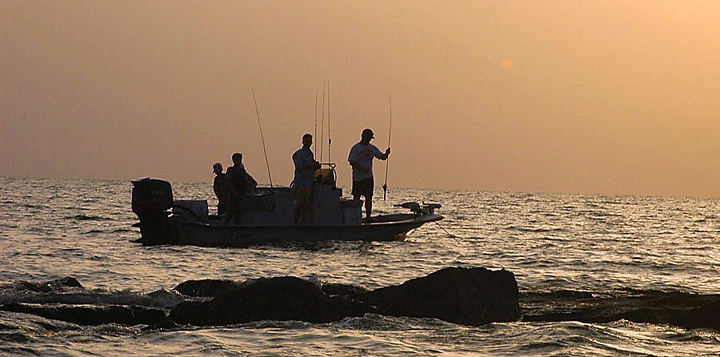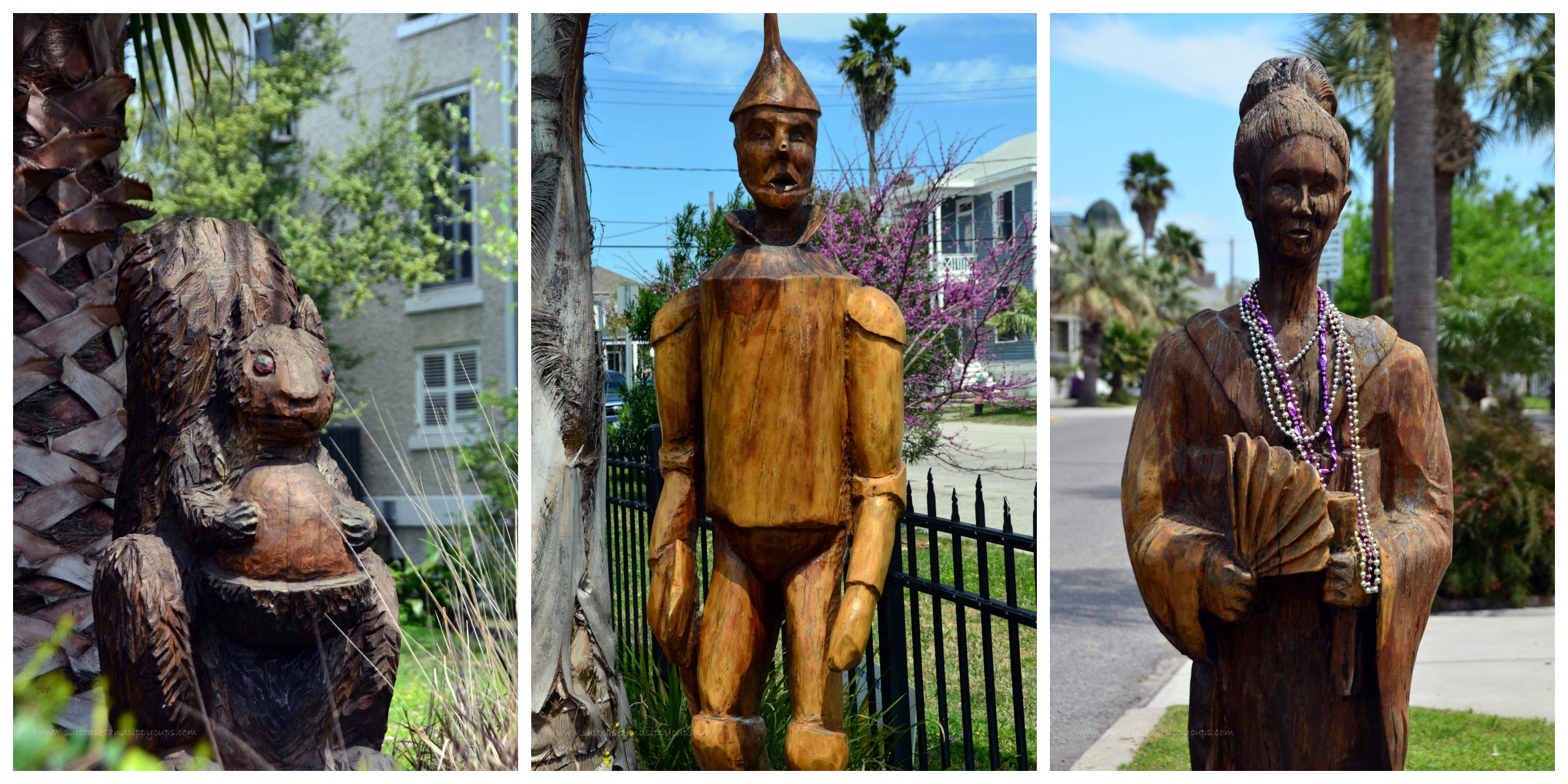 By Rob Lucey
By Rob Lucey
To learn about Galveston’s colorful history, you can tour mansions, take guided walks or rides through the historic districts, explore the seaport and railroad museums, and read the many books that shine a light on parts of the island’s past. Or you can savor some time in the free museums hidden on the island.
Two museums hidden in plain sight can be found within the walls of two of the island’s historic landmark structures: the Rosenberg Library at 2310 Sealy St. and the Hotel Galvez at 2024 Seawall Blvd.
More than Just Books
The library holds its own place in Texas history as the oldest continuously operating public library in the state. After opening its doors in 1904, it absorbed the collections of the former Galveston Public Library. The Greek revival structure was funded by a $600,000 bequest from Henry Rosenberg, a Swiss immigrant who raised from a clerk’s job to become financier, president of the Galveston City Railroad Company, philanthropist and public servant. A heroic bronze statue of him sits outside the building.
 Soon after the building opened, citizen organizations and individuals began donating art and other historic items to adorn its walls. The collection grew to thousands of artifacts, and the library began the practice of showcasing significant items in display cases along the main corridor. Those displays evolved into what is now the Rosenberg Library Museum, open 9am-6pm., Monday-Saturday. It is housed primarily on the fourth floor, although the practice continues of hanging art throughout the library and rotating items through display cases in the second floor main corridor.
Soon after the building opened, citizen organizations and individuals began donating art and other historic items to adorn its walls. The collection grew to thousands of artifacts, and the library began the practice of showcasing significant items in display cases along the main corridor. Those displays evolved into what is now the Rosenberg Library Museum, open 9am-6pm., Monday-Saturday. It is housed primarily on the fourth floor, although the practice continues of hanging art throughout the library and rotating items through display cases in the second floor main corridor.
 While ascending the grand stairway, visitors pass several impressive paintings en route to the museum level. The Lykes Gallery (a gift to the city from the family of James McKay Lykes) occupies part of what was originally a large lecture hall. Now it is home to the permanent exhibit “Galveston: Treasure isle of the Gulf.”
While ascending the grand stairway, visitors pass several impressive paintings en route to the museum level. The Lykes Gallery (a gift to the city from the family of James McKay Lykes) occupies part of what was originally a large lecture hall. Now it is home to the permanent exhibit “Galveston: Treasure isle of the Gulf.”
A stained glass window depicts the first ship owned by the Lykes Lines shipping company, and the ship’s bell and helm are part of the furnishings of the gallery. Exhibits include Native American artifacts from the island’s indigenous Karankawas and items representing the many state’s “firsts” that occurred on the island, including the first telegraph, first telephone and first hospital.
Nautical enthusiasts will be impressed by the pieces from the Texas Navy and Battle of Galveston display describing the 1862 Civil War naval skirmish in Galveston Harbor.
Other exhibits trace the island’s role as a port of entry for imports and immigrants, the state’s cotton industry that enriched the city’s shipping merchants, early commercial enterprises, natural disasters and the golden era of entertainment, gambling and tourism in the early 1900s.
On the opposite end of the former lecture hall is the Hutchings Gallery, funded by the family of Sealy Hutchings. It displays historic items from Galveston families that have been donated to museum, including portraits of several of the city’s founders. The current display, “Galveston Before the Civil War,” includes early depictions of the city and artifacts from the city’s early days.
 Just up a few steps, you enter the Harris Gallery, which is in an adjoining portion of the library’s Moody Wing added in the 1970s. Thematic collections from the museum’s thousands of paintings, illustrations and photos rotate through the space, named for John Woods Harris III, who served nearly four decades as a trustee on the library board. As board president, he spearheaded efforts to raise funds for construction of the library extension in the 70s. Currently on display is “Voices from the Past: An Exhibit Celebrating African American History in Galveston.”
Just up a few steps, you enter the Harris Gallery, which is in an adjoining portion of the library’s Moody Wing added in the 1970s. Thematic collections from the museum’s thousands of paintings, illustrations and photos rotate through the space, named for John Woods Harris III, who served nearly four decades as a trustee on the library board. As board president, he spearheaded efforts to raise funds for construction of the library extension in the 70s. Currently on display is “Voices from the Past: An Exhibit Celebrating African American History in Galveston.”
The final rotating display area is the Hallway Gallery leading out of the Lykes Gallery. It’s cases currently display “Arts of the American Southwest: The Pabst Collection.” The Native American jewelry, weavings, pottery, baskets and other items were collected by Galvestonians William and Viola Pabst while traveling through New Mexico and Arizona in the 1930s. The library acquired the collection in 1986.
Hotel History
While you climb up stairs to get to the library’s museum, at the Hotel Galvez you slip down the flight of stairs just beyond the check-in desk. There you’ll find a couple of hallways lined with poster-sized historic photos and display cases packed with memorabilia telling the story of the island’s beach front entertainment district. The Hall of History display opened in 2011 to mark the 100th anniversary of the hotel’s opening. Residents donated one-of-a-kind items for the exhibit, which was assembled by the Galveston County Museum.
 Sepia tone photos show past incarnations of the Pleasure Pier and bath houses that drew crowds to the island. In another, old cars line the Seawall as thousands gather for the early Bathing Girl Revues (which evolved into the Miss Universe Pageant). Others show the construction of the Galvez as the flood grade of the island was raised behind the Seawall.
Sepia tone photos show past incarnations of the Pleasure Pier and bath houses that drew crowds to the island. In another, old cars line the Seawall as thousands gather for the early Bathing Girl Revues (which evolved into the Miss Universe Pageant). Others show the construction of the Galvez as the flood grade of the island was raised behind the Seawall.
Additional exhibits introduce some of the entertainers, presidents and other famous visitors to the Galvez. Many came to visit nearby speakeasy gambling houses during the Prohibition era when the island billed itself as the Free State of Galveston. A photo of Sam Maceo, owner of several such establishments, shows him in the Galvez penthouse where he lived.
There are also descriptions of the World War II era when the hotel was repurposed as barracks for soldiers stationed on the island.
The free mini-museum is open for anybody to visit. Learning about the colorful past provides great context for visitors to better appreciate the beach amenities of today.



